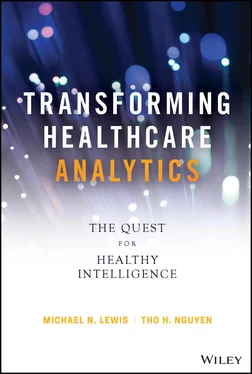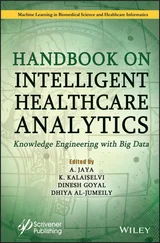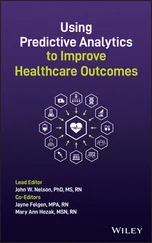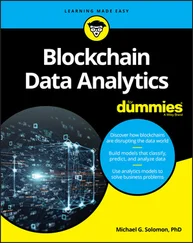Thus, health data is defined as any data that relates to your health and comes from many sources such as behavioral observations, environmental factors, and socioeconomic data. Health data can be structured or unstructured. For example, your name, date of birth, blood type, or gender is considered as structured data and can be standardized in columns and rows. Most structured data can be stored in a data warehouse. Unlike structured data, unstructured data such as your doctor's notes, x-rays, MRIs, audio recordings, or emails are not standardized and have become more prevalent. Unstructured data are typically not stored in a data warehouse and require a different data storage mechanism. All structured and unstructured health data are collected over time to help understand the past, assess the present, and foresee the future of your health.
Besides our own personal health data, other health data sources can come from clinicians, pharmacies, labs, hospitals, health agencies, and devices (mobile) as described below and shown in Figure 1.2:
Clinicians – an encounter with your family physician, specialist doctor, physician assistant, or nurse that examines your condition and recommends a cure for a diagnosis.
Pharmacies – medications that are prescribed by your doctor to maintain your health or cure an illness and distributed at your local or online pharmacy. It can be generic as antibiotics to destroy bacteria or specific as lowering your blood pressure. These prescriptions are captured and regulated to avoid possible abuse.
Labs – this can be as simple as blood work to determine your blood type, cholesterol level, vitamin deficiency, or as complex as tests to determine if you are a sickle cell anemia carrier. Each lab work is carefully analyzed and the results are reported to your doctor for diagnosis.
Hospitals – visits to the hospital that normally require a doctor's attention for more serious procedures such as heart surgery, removal of a tumor, or giving birth.
Health agencies – agencies such as Centers for Disease Control (CDC) or National Institute of Health (NIH) provide medical research using our health data to control the spread of diseases or find cures of deadly diseases so that we can live longer and healthier.
Devices (mobile) – these can be both apparatus that gets installed in your body or wearables on your wrist to collect vital data such as heartbeat, blood pressure, number of steps, etc.
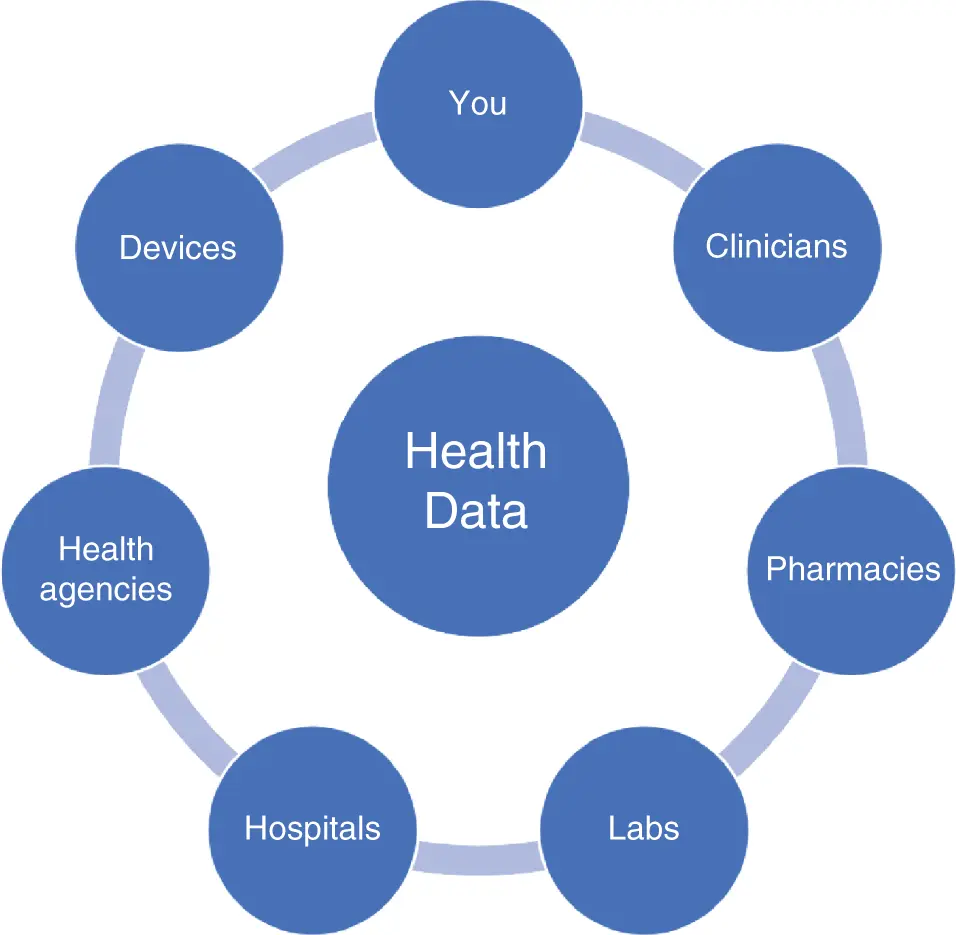
Figure 1.2 Sources of Health Data: From Paper to Digital
Source: Author.
HEALTHCARE CHALLENGES AND FOCUS AREAS
Now that the definitions have been established, let's examine some high-level challenges and how they translate into focusing on people, process, and technology to move forward into the twenty-first century and beyond. Many organizations, not just healthcare, are sharing with us similar challenges they encounter in the ever-changing world of economics and competition.
The first challenge is shortage of resources. Providing quality healthcare starts with people. Nurses, physician assistants, doctors, lab technicians, specialists, and therapists, etc. are always in high demand. According to Mercer's US Healthcare External Labor Market Analysis, the United States will need 2.3 million new healthcare workers by 2025 in order to take care of its aging and growing population adequately. These professions interact with patients on a daily basis, collect your data for analysis, and document the diagnosis and treatment to help you become healthy and on your way to wellness. Currently, there is a shortage and a challenge to keep talented professionals in healthcare while other sectors such as retail and manufacturing are displacing workers. Some healthcare organizations are welcoming these displaced workers and train them to fill some jobs such as lab technician, data entry, and medical assistants. There are many reasons as to why there is a shortage, but healthcare organizations are exploring strategies and offering incentives to avoid high turnover. Some of the strategies will be explored in a later chapter that revolves around people. In a nutshell, treating people as an asset becomes a competitive advantage to fulfilling the needs in healthcare.
The second challenge is using data effectively. As Figure 1.2illustrates, the multifaceted sources of health data each person produces, managing the data is the biggest challenge healthcare organizations are facing today. Much of the data are in multiple places and systems. There is no industry standard or governance to allow patients to see their own data and there is no one system to host all of the patient data for easy access that clinicians and hospitals need to provide high-quality care for their patients. In the healthcare sector, we have plenty of data but lack the comprehensive knowledge because organizations are unable to access the many dimensions of data and analyze all the data they have about a patient. To borrow a quote from W. Edwards Deming, “Without data, you're just another person with an opinion.” Opinions in healthcare can become a liability and have high risks of being incorrect. Clinicians need to have data-driven insights to make informed decisions so that mistakes can be avoided. In addition, the ability to analyze the data has become more complex with a variety of data types (structured and unstructured) and healthcare organizations may not have the right infrastructure and/or tools to mitigate the complexity. As data become more voluminous, it is imperative to have a solid foundation of technology and a well-defined process for managing data, analytics, and decisions.
The third challenge is innovating toward a digital transformation. All industries are challenged to innovate and prepare for the digital transformation. Digital transformation requires organizations to re-think their overall business processes. It is about using digital technologies and leveraging all your data to put the customer at the heart of the business. Other industries such as retail, travel and transportation, and telecommunications have embraced and started the path toward a digital transformation, placing emphasis on enhancing the customer experience. We believe the healthcare sector is lagging behind and has not yet developed a comprehensive strategy to overcome a highly siloed, fragmented ecosystem that many healthcare providers are dealing with toward obtaining a holistic view of the patient. In order to succeed in digital transformation, healthcare organizations must start evaluating a strategy and determine ways to become more effective and efficient in connecting and applying the data, deploying technology to improve communication to better engage with the patient, and enhance the patient experience. We believe healthcare companies are in catchup mode and the digital transformation initiative must be in the forefront to elevate the healthcare industry.
The above challenges that we hear from colleagues, vendors, and customers translate into three areas of focus for the rest of this book:
People – many industry articles, thought leaders, and trends tend to indicate that data is the most important asset. Mike and I disagree and strongly believe that people are the most important asset, regardless of the industry or organization. You and I are the ones who are the creators and consumers of data. You and I are the ones who have to provide the intelligence into systems to transform data into action. Thus, investing in people, especially in healthcare, is a priority to become more patient aware and more friendly in communication as an industry.
Process – as described earlier, everyone accumulates data and stacks of paperwork are collected over the years. The one constant struggle and the biggest challenge in healthcare is the push to move away from paper. Pushing healthcare professionals in that paperless direction is an uphill battle and a change that is greatly needed to have better communication within the healthcare ecosystem. In addition, the ability to streamline the process from data to intelligence to action becomes an exercise that will drive efficiency and effectiveness between the patient and the clinician.
Читать дальше
